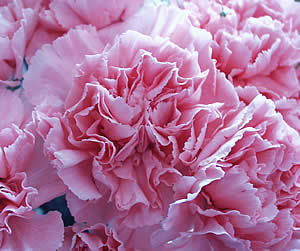Pansies
Pansies are perfect for cool weather. They provide a  cheery spot of color as temperatures drop into Winter or rise up into Spring and Summer. Pansies are very hardy, even up into Zone 5, contradicting their wimpy "pansy" name.
cheery spot of color as temperatures drop into Winter or rise up into Spring and Summer. Pansies are very hardy, even up into Zone 5, contradicting their wimpy "pansy" name.
About Pansies
Our modern flower garden pansies ( Viola wittrockiana ) are a garden plant derived chiefly from the wild pansy of Europe. The Greeks, thinking the plant had medicinal merits, cultivated pansies as early as 400 BC. The flower markets of Europe have offered pansies since the 1800s.
During the Victorian era, sending pansies to someone meant you were thinking of or remembering them. The common name itself, pansy, comes from the French word, pensée, meaning "thought".
Pansies are available in a wide variety of colors, even black. Bright colors or pastels can complement most any garden scheme. The flowers themselves fall into two categories: plain faced or monkey faced (with a dark center, as in above photo.
 Pansies are edible and occasionally show up in gourmet salads or dessert garnishes. These flowers are very conducive to craftwork as well since their flat faces are easy to press. Dried pansies be framed or even glued to plain stationery cards.
Pansies are edible and occasionally show up in gourmet salads or dessert garnishes. These flowers are very conducive to craftwork as well since their flat faces are easy to press. Dried pansies be framed or even glued to plain stationery cards.
How to Grow Pansies
To start pansies from seed, begin the growing process 8-10 weeks before you want to plant them outdoors (Fall or early Spring.) Chill the seeds in the refrigerator for 24 hours before planting. Cover the seeds barely with soil and then put a sheet of newspaper on top to provide a dark germination environment. Heat the bottom of the planting flat with a water-proof heating pad. The seeds will germinate in about 10 days. At this point remove the newspaper. Follow regular guidelines for maintaining plants as they grow.
When your plants are ready (or when you’ve purchased ready-to-go plants), select a site that receives morning sun. Pansies grow best in rich soil that drains well. Space plants 8-10 inches apart. Pansies will thrive while temperatures are around 50 degrees at night and no more than 70 degrees during the day. Deadhead spent blooms. Most pansies are biennial, so you can enjoy them for more than one season. Cut back overgrown plants to rejuvenate.





